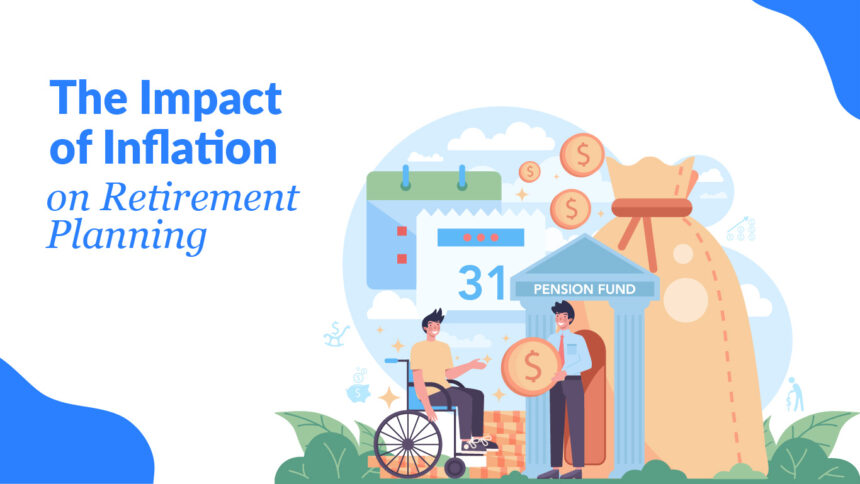Rajiv planned to retire with savings of ₹50 lakhs, which he assumed would be reasonably sufficient for about 20 years. As time passed the prices of groceries, medicines, and other utilities kept rising. A sum of ₹1 lakh does not hold nearly as much worth today as it did a decade ago. This is known as inflation. Let us understand how inflation affects planning for retirement and how one can effectively plan against it.
Pay less, save more! Consolidate your debts and enjoy lower monthly payments.
Understanding Inflation and Its Effects
● What is Inflation?
Inflation is when the prices of goods and services are consistently increased over time. This reduces the buying value of money. For example, today’s price of a loaf of bread is ₹40, and five years from now its price will be ₹50, that’s inflation.
● Why Does It Matter for Retirees?
Most of the time, elderly people or the retirees rely on fixed incomes such as pensions or savings. Well, if these are not adjusted for inflation, it eventually reduces one’s purchasing power. Thus, it will get more expensive to consume basic items.
● Historical Context in India
Inflation in India has been around 6-7% points in average years. This means, if the inflation continues at this rate, something worth ₹100 today would reach ₹200 after around 10 years.
How Inflation Impacts Retirement Income
| Effect | Example |
| Reduced Purchasing Power | A pension of ₹30,000 per month today may feel like only ₹20,000 in 10 years due to inflation. |
| Higher Living Costs | Healthcare costs in India increase by 10-15% annually, much faster than general inflation. |
| Risk of Outliving Savings | A person retiring at 60 may live till 85, needing funds to last 25 years. Inflation erodes these savings. |
Read More :- SBI HRMS
Strategies to Protect Retirement Savings
To handle inflation, here are some simple strategies:
- Plan for Future Costs
○ Get future expense calculations done by using digital retirement calculators.
○ For example, if we take today’s expenses of ₹40,000 a month at 6% inflation, they could grow to ₹80,000 in 12 years.
- Invest in Growth Assets
○ Fixed deposits offer safety but they might not be able to defeat inflation.
○ Equity investments can increase wealth much faster. For instance, the Sensex in India has provided average annual returns of around 12-15% for the last 20 years.
- Choose Inflation-Adjusted Pensions
○ Most pension schemes revise pensions every year to keep pace with inflation.
○ If he chose such a plan, the pension of Rajiv would now be between ₹30,000 and ₹40,000.
- Review Your Financial Plan Regularly
○ Economic conditions change frequently.An annual review of savings and investments is certainly a step toward ensuring that you are on track.
- Seek Expert Advice
○ Financial advisors can indicate the best combination of investments. For instance, they might recommend splitting retirement savings into 60% equity and 40% debt for better inflation protection.
Conclusion
Inflation slowly reduces the value of money. Since it reduces the value of currency, it poses a challenge in retirement planning. But through intelligent strategies, retirees can safeguard their savings. This can be done through wise investments, through estimating upcoming expenses, and through revision of financial plans that would help ensure a secured retirement.
Retirement planning is not just accumulating money but “intelligently accumulating” money. Considering the impact of inflation, you can live with peace of mind throughout life.
FAQ
- What is inflation in simple terms?
Inflation is the rise in prices over time, reducing the value of money. - How does inflation affect retirement savings?
It reduces the purchasing power of your savings, making them less effective over time. - Can investments beat inflation?
Yes, growth-oriented investments like equities often outperform inflation in the long run. - Why is inflation planning important for retirees?
Without planning, retirees may outlive their savings due to rising living costs. - What type of pension plans combat inflation?
Inflation-linked pensions adjust payouts based on rising costs, preserving purchasing power.










 /home/u448362301/domains/theexpotab.com/public_html/wp-content/themes/foxiz/templates/popup.php on line 167
/home/u448362301/domains/theexpotab.com/public_html/wp-content/themes/foxiz/templates/popup.php on line 167